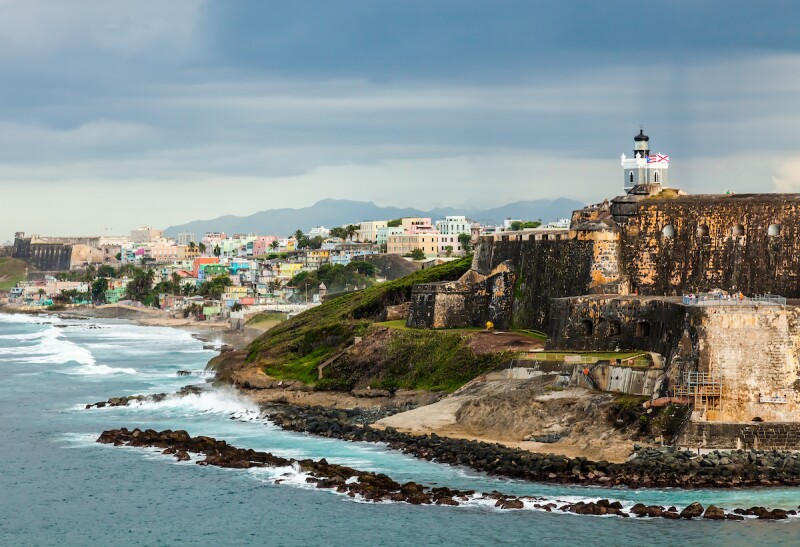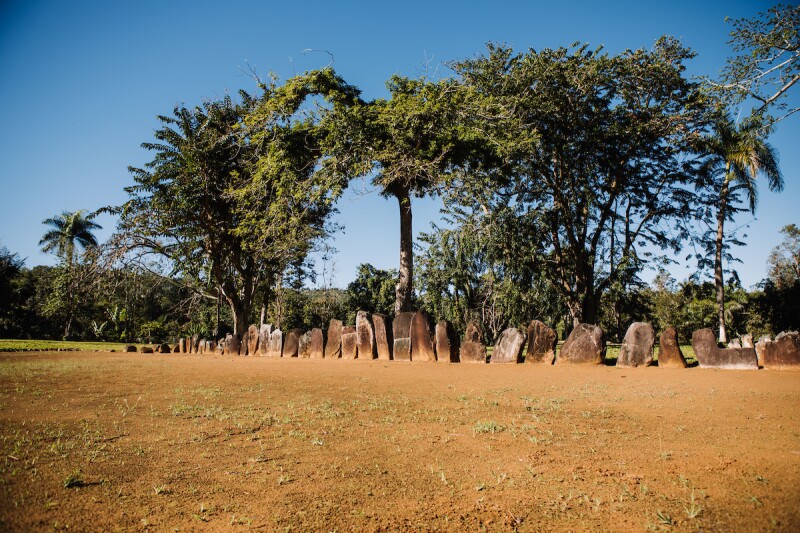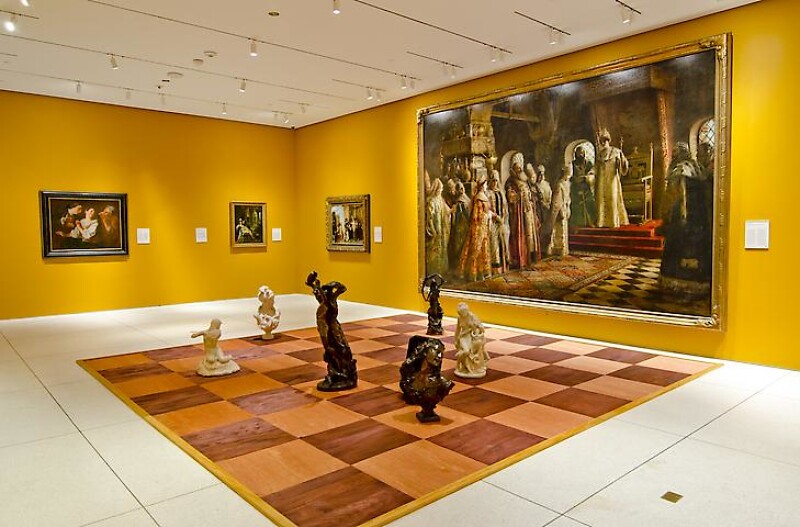If you’ve been spending most of your downtime streaming films or reading books filled with historic intrigue or beautiful backdrops, you only need to go as far as Puerto Rico to satisfy your craving for stimulation or a change of scenery in real life. For history and culture seekers, Puerto Rico is one of the most rewarding experiences right here within the U.S.—and has blissful beaches to boot.
On the island, you can dig deep into the rich culture as well as a hearty helping of mofongo, the ultimate local comfort food made with fried plantains and your choice of meat. Balancing eons of history and natural beauty, it’s a getaway that will both spark your curiosity and chill you out.
Celebrating 500 years since its founding (some 400 of which were under Spanish rule), the island’s capital, San Juan, is a vibrant introduction to the wealth of U.S., European, African, and indigenous history that makes Puerto Rico such an extra-compelling place to visit. The hundreds of years spent under the Spanish crown resulted in one of the most well-preserved islands for colonial architecture. A trip to the island’s mountainous core reveals its deep indigenous roots. And on the coast, the town of Loíza provides an in-depth look at the island’s prominent African legacy.
Before the arrival of the Spanish, Taíno inhabitants called their island Borikén, or “land of the brave lord.” This term became Boriquén in Spanish (and eventually Borinquen) and has remained a symbol of the island’s rightful inhabitants, many of whom died within 50 years of the colonists’ arrival. Over the centuries, “Boricua” has evolved into a term that stands for a sense of pride and cultural identity. Here are the ways you can discover the real story of Puerto Rico through centuries of old-world and new-world history.
Puerto Rico is committed to providing a safe travel experience. Check out the Visitor Health & Safety Guidelines to learn how Puerto Rico is prioritizing your safety and to get an idea of what to expect when you arrive.
Take a step back in time in Old San Juan

Thanks to its proximity to the mainland U.S., Puerto Rico offers the culture of the Caribbean and the history of Europe closer to home. This year marks the 500th anniversary of the founding of San Juan, where you can explore the commanding Castillo San Felipe del Morro, or El Morro, in the morning, and then debate the origins of the piña colada over late afternoon cocktails at Barrachina.
Among the many structures the Spanish built, including a city wall around Old San Juan, El Morro took some 250 years of careful engineering to complete the six-level fortress designed to thwart invaders. For a stylish stay with a touch of time-travel, try Hotel El Convento, which also has access to its own beach club in Condado, or find a nook in the 17th-century mansion transformed into The Gallery Inn. If you’re wondering where to get lunch in the historic district, nearly any local will point you to Café el Punto, a longstanding neighborhood favorite.
Discover the golden era of luxury travel in Condado

Condado Vanderbilt Hotel
Tacos & Tequila -Condado Vanderbilt Hotel
Following the Spanish-American War, which lasted less than four months, Spain ceded Puerto Rico to the U.S. in 1898, beginning a new chapter in the island’s history. Two years after Puerto Rico officially became a U.S. territory and its residents U.S. citizens in 1917, the swanky Condado Vanderbilt Hotel opened in 1919 in the Condado neighborhood of San Juan. True to the glamour of the Roaring Twenties, the hotel ushered in an unprecedented era of luxury travel for the island and the arrival of well-heeled denizens from the mainland, including the hotel’s namesake Vanderbilts.
Overlooking a prime stretch of sand on San Juan’s glittery Ashford Avenue, the hotel’s Spanish Revival style was designed by the same team behind Grand Central in New York City. At the hotel’s VC Lounge & Cocktail Bar, order nouveau and classic cocktails with a tropical twist like El Soñador made with bourbon, fresh lemon juice, and cardamom. Or, for a quirky local gem, head to the old-school barbershop and bar El Bar Bero
Day trip to ancient sites for indigenous history

Parque Ceremonial Indígena de Caguana
Michelle Camacho
Before the arrival of Christopher Columbus in 1493, or what’s referred to as the pre-Columbian era, the Taíno people populated Puerto Rico and other Caribbean islands, along with other indigenous populations, such as the Igneri and pre-Taíno. On an excursion from San Juan or on the way to Ponce, the Taína Route in the central mountains offers vestiges of these inhabitants, who largely perished from disease or exploitation once the Spanish took hold.
Even today, however, there are still links to their legacy in everyday Puerto Rican words, cuisine, and artwork. To get a sense of place and soak up breathtaking scenery, visit the Cueva del Indio caves in Arecibo, about 45 minutes from San Juan. This once-sacred land features a high concentration of petroglyphs.
Winding further south through the mountains, the Centro Ceremonial Indígena Caguana in Utuado is an important Taíno archaeological site along with the nearby Joya de Santana indigenous cemetery. On the south coast in Ponce, about an hour and a half from San Juan, the Centro Ceremonial Indígena de Tibes, is a showcase of Igneri, pre-Taíno, and Taíno cultures.
Dance your way to the Afro beat in Loíza
The Spaniards brought African slaves to work the lands of the island, and their influence and heritage remains present today through food (mofongo is a local delicacy with African roots), music, and dance. On a trip to Loíza, just 20 minutes from San Juan, you can immerse yourself in the vibrancy of the ancestors.
Learn all about the movements and sounds of Bomba at Batey de los Hermanos Ayala, where you can partake in dancing or just enjoy a performance. Across the street, take a tour of Samuel Lind’s art studio to see his depictions of quintessential Afro-Puerto Rican traditions and history. You can also learn how to tie a hair turban in one of the workshops offered at Cueva María de la Cruz recreational park.
Dig into local culture in Ponce

Museo de Arte de Ponce
In contrast to Old San Juan, the coastal city Ponce was constructed mainly between the 1890s to 1930s by local Puerto Ricans. You’ll notice Art Deco influences, as well as the homegrown architectural style known as Ponce Creole, which merges island and European aesthetics.
Following the lead of the Santurce neighborhood in San Juan, which has become a hub for street art, Ponce’s colorful streets are veritable living museum with wall-size canvases, such as Javy Cintrón’s “Sangre y resistencia” at Paseo Amor. More traditionally, the city is known for its proliferation of museums, including Museo de Arte de Ponce and Museo de la Historia de Ponce.
To learn more about local legends, visit the former home of the famous Serrallés family of DonQ rum, now the Castillo Serrallés Museum. The 1930s Spanish Revival-style building features a butterfly nursery and a peaceful Japanese garden with pagodas and koi ponds. For historic charm, book a room at the Meliá Century Hotel, which has layers of neoclassic and colonial influences with elegant wood paneling, marble floors, and 13-foot decorative ceilings.
See the last days of Spanish colonialism in Mayagüez
A short drive from Rincon’s surfy spots, Mayagüez was founded in 1760 by a Spanish colonist who retained the area’s Taíno name. Fittingly, it later became a hub for pro-independence thinkers who wanted freedom from Spain.
With easy access to beaches in nearby towns north and south, including Guajataca Beach and Ballena Beach, Mayagüez’s tree-lined plazas and cathedrals strike an attractive balance between history and the outdoors. To get into the local spirit, stay at the Hotel Colonial, a former convent turned boutique inn, offering a centrally located base filled with character.
Throughout Puerto Rico, you’ll find a seamless mingling of modern life, centuries-old history, and breathtaking natural beauty. Whether you want to mix up a beach trip with some intellectually satisfying, self-guided tours or delve into its ancient roots, there is plenty to uncover.











